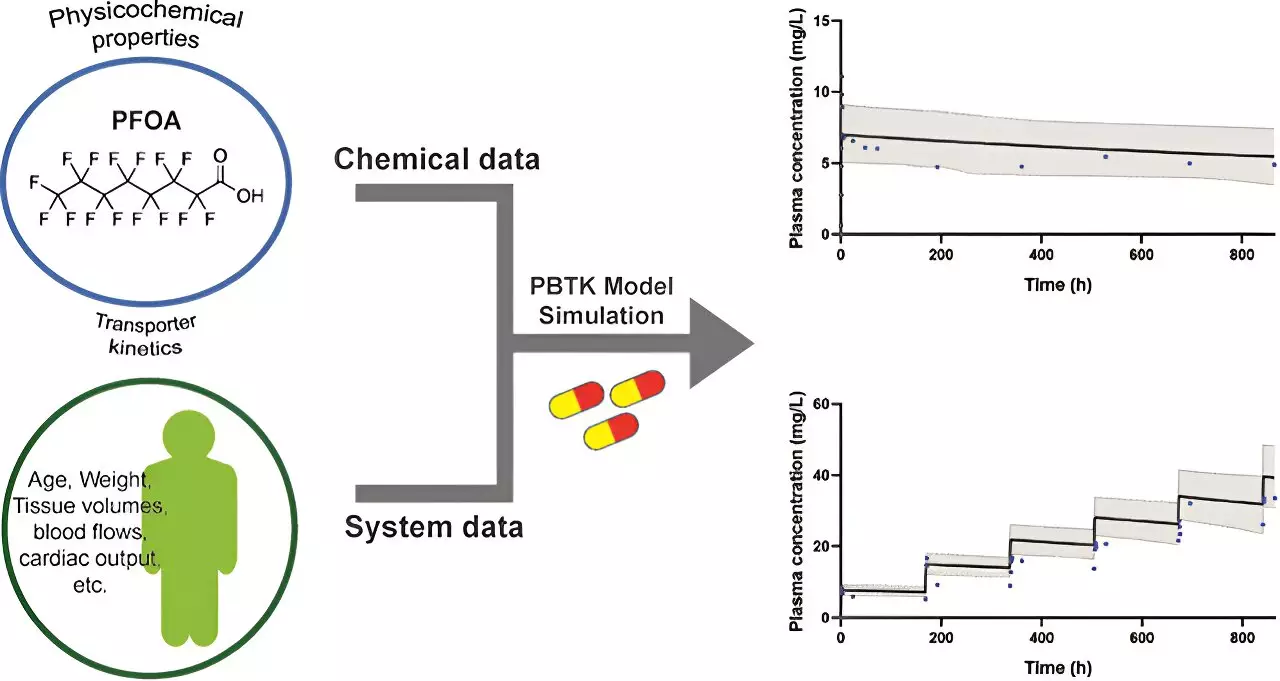The presence of perfluorooctanoic acid (PFOA) in the human body has raised concerns due to its potential health risks. A team of scientists from the A*STAR’s Singapore Institute of Food and Biotechnology Innovation (SIFBI) and the A*STAR Skin Research Labs (A*SRL) has made a significant breakthrough in understanding the processing of PFOA in the human body. This breakthrough could potentially pave the way for the development of safer replacement chemicals for industrial and consumer products, as well as help regulatory bodies measure the impact of PFOA and explore safety limits in products.
PFOA is an environmental contaminant commonly found in food, food packaging, and consumer products such as non-stick cookware, rugs, and cosmetics. It is known for its oil-, water-, and heat-resistant properties, making it widely used in various industrial and consumer applications. Humans are primarily exposed to PFOA through oral ingestion. Once in the body, PFOA exhibits a high level of persistence, with a half-life of up to four years. This prolonged presence can potentially lead to health concerns such as liver and kidney cancer, thyroid issues, developmental effects on the immune and reproductive systems, and fetal development.
The recent research conducted by Dr. James Chan and his team sheds light on the biology of PFOA and the mechanisms responsible for its high resistance to biological degradation in humans. The findings reveal that PFOA binds strongly to blood proteins, limiting its ability to be filtered by the kidneys and reducing its elimination speed. Moreover, PFOA resembles the fatty acids that our body needs, leading the kidneys to reabsorb it from the urine, mistaking it for an essential nutrient. This reabsorption mechanism further contributes to the persistence of PFOA in the body. Additionally, PFOA utilizes the same pathway as essential fatty acids to enter our tissues, allowing it to be widely distributed within all body organs, increasing its potential for harm.
Understanding how PFOA persists in the body provides valuable insights for the development of safer next-generation chemicals for use in various products. The research has enabled the creation of a virtual model that replicates the biological traits of the human body’s chemical processing mechanisms. This model is currently utilized to investigate the sources of PFOA exposure within the Singapore population. Furthermore, there are plans to expand its use to study other Per- and Polyfluoroalkyl Substances (PFAS) beyond PFOA. PFAS encompasses over 14,000 chemicals, and understanding their presence and potential impact is crucial for regulatory bodies to measure the amount of PFAS in consumer products.
The study conducted by Dr. James Chan and his team not only provides insights into PFOA but also offers a general approach for studying PFAS, which are still largely unknown. The research utilizes data of human origin instead of animal models, providing a more accurate understanding of the true persistence of PFOA in humans. By applying this approach to other PFAS chemicals, scientists can work together to better understand their potential for harm and contribute to improving population health.
The breakthrough in understanding how PFOA is processed by the human body has significant implications for the development of safer replacement chemicals and the measurement of PFAS in consumer products. The research conducted by the A*STAR scientists provides valuable insights into the persistence of PFOA in the body and the mechanisms responsible for its resistance to degradation. By further studying PFAS using a similar approach, scientists can gain a better understanding of these chemicals and their potential impact on human health. This collaborative effort has the potential to improve population health and contribute to the design of safer products for the future.



Leave a Reply